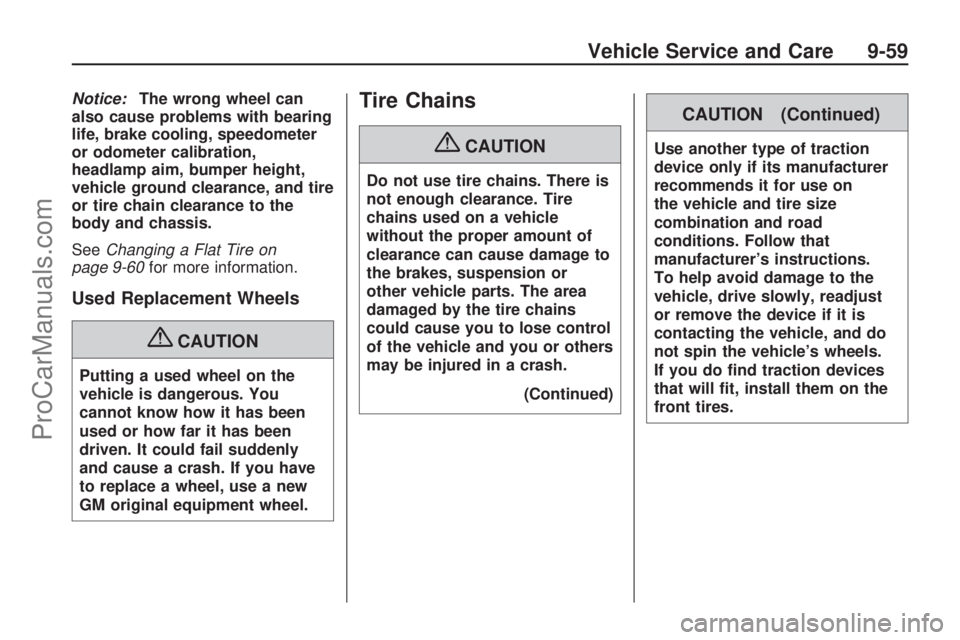Traction – AA, A, B, C
The traction grades, from highest
to lowest, are AA, A, B, and C.
Those grades represent the
tire’s ability to stop on wet
pavement as measured under
controlled conditions on
speci�ed government test
surfaces of asphalt and
concrete. A tire marked C may
have poor traction performance.
{WARNING
The traction grade assigned
to this tire is based on
straight-ahead braking
traction tests, and does not
include acceleration,
cornering, hydroplaning, or
peak traction characteristics.Temperature – A, B, C
The temperature grades are
A (the highest), B, and C,
representing the tire’s resistance
to the generation of heat and
its ability to dissipate heat
when tested under controlled
conditions on a speci�ed indoor
laboratory test wheel. Sustained
high temperature can cause
the material of the tire to
degenerate and reduce tire life,
and excessive temperature
can lead to sudden tire failure.
The grade C corresponds to
a level of performance which
all passenger car tires must
meet under the Federal MotorVehicle Safety Standard
No. 109. Grades B and A
represent higher levels of
performance on the laboratory
test wheel than the minimum
required by law.
{WARNING
The temperature grade
for this tire is established
for a tire that is properly
in�ated and not overloaded.
Excessive speed,
underin�ation, or excessive
loading, either separately or
in combination, can cause
heat buildup and possible
tire failure.
Vehicle Service and Care 9-57
ProCarManuals.com
Notice:The wrong wheel can
also cause problems with bearing
life, brake cooling, speedometer
or odometer calibration,
headlamp aim, bumper height,
vehicle ground clearance, and tire
or tire chain clearance to the
body and chassis.
SeeChanging a Flat Tire on
page 9-60for more information.
Used Replacement Wheels
{CAUTION
Putting a used wheel on the
vehicle is dangerous. You
cannot know how it has been
used or how far it has been
driven. It could fail suddenly
and cause a crash. If you have
to replace a wheel, use a new
GM original equipment wheel.
Tire Chains
{CAUTION
Do not use tire chains. There is
not enough clearance. Tire
chains used on a vehicle
without the proper amount of
clearance can cause damage to
the brakes, suspension or
other vehicle parts. The area
damaged by the tire chains
could cause you to lose control
of the vehicle and you or others
may be injured in a crash.
(Continued)
CAUTION (Continued)
Use another type of traction
device only if its manufacturer
recommends it for use on
the vehicle and tire size
combination and road
conditions. Follow that
manufacturer’s instructions.
To help avoid damage to the
vehicle, drive slowly, readjust
or remove the device if it is
contacting the vehicle, and do
not spin the vehicle’s wheels.
If you do �nd traction devices
that will �t, install them on the
front tires.
Vehicle Service and Care 9-59
ProCarManuals.com

